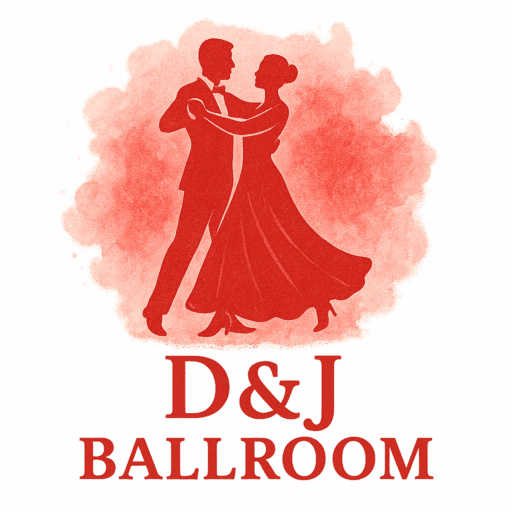Introduction: Why Heel and Toe Precision Matters in Ballroom
If you’ve ever watched a world-class ballroom dancer glide across the floor, you’ll notice something magical about the way their feet move. It’s not just the elegance of the upper body or the graceful sway with their partner—it’s the crisp, precise heel and toe actions that make every step flow seamlessly.
Heel and toe precision is one of the building blocks of ballroom dance technique, and without it, even the most beautiful choreography can look messy. If you’re serious about your dancing, drills are your best friend. In this guide, we’ll explore five ballroom technique drills for heel and toe precision, along with tips for applying them in styles like the Waltz, Tango, and Foxtrot.
Understanding the Basics of Heel and Toe Action
Before jumping into drills, let’s revisit the fundamentals.
What “Heel Lead” Means
A heel lead happens when your heel touches the floor first during a forward step. This is essential in dances like the Waltz, Foxtrot, and Quickstep, where grounded power is key.
What “Toe Lead” Means
A toe lead is when the toe connects first, most common in backward or side steps. This action creates smoothness and elegance—perfect for flowing through dances like the Viennese Waltz.
Common Mistakes Beginners Make
- Dragging the heel or toe instead of placing it cleanly.
- Collapsing posture while focusing only on feet.
- Rushing the timing without controlling rise and fall.
Benefits of Practicing Heel and Toe Precision
Improved Balance and Control
Precision stabilizes your frame, making you glide instead of stumble.

Cleaner Lines and Shapes
Your foot placement defines the visual lines judges and audiences love.
Better Connection with Your Partner
Clear heel and toe actions allow for seamless partner connection.
Higher Competition Scores
In ballroom competitions, judges often dock points for sloppy footwork—clean precision makes you stand out.
Drill 1: Slow Walking Heel-to-Toe Drill
Step-by-Step Instructions
- Stand tall in your ballroom frame.
- Step forward slowly, placing the heel first.
- Roll through to the toe with control.
- Walk backward, using toe leads.
Key Tips to Maximize Benefits
- Imagine your feet drawing smooth lines on the floor.
- Keep movements slow—speed hides mistakes.
This drill is a simple foundation you’ll revisit in every training session.
Drill 2: Rise and Fall Heel Precision Drill
Step-by-Step Instructions
- Begin with a forward heel lead.
- As weight transfers, rise through the ankles and balls of your feet.
- Control the lowering back into the heel.
How This Drill Improves Waltz and Foxtrot
The rise and fall technique creates that sweeping, floating look dancers aim for in Waltz and Foxtrot.
Drill 3: Toe Glide and Extension Exercise
Step-by-Step Instructions
- Start with feet together.
- Extend one foot forward, brushing the toe across the floor.
- Return to neutral and repeat.
Common Errors and Corrections
- Error: Lifting the foot.
- Fix: Imagine your toe as a paintbrush gliding across the canvas.
- Error: Moving too fast.
- Fix: Count to four with each glide.
This is especially useful for ballroom drills that emphasize extension and control.
Drill 4: Heel Pivot Control Drill
Step-by-Step Instructions
- Place weight onto one heel, toe lifted slightly.
- Pivot smoothly, rotating from your core.
- Alternate feet.
Applying This Drill in Tango and Quickstep
Heel pivots sharpen your Tango walks and add crispness to Quickstep turns, making them competition-ready.
Drill 5: Heel-to-Toe Shadow Practice
Step-by-Step Instructions
- Face a mirror in ballroom hold (solo).
- Run through a short routine, focusing on precise heel and toe placement.
- Exaggerate your actions to train muscle memory.
Partner Variation for Extra Challenge
Add your partner later to test how well your actions communicate without words. Silent connection builds partnership quality.
How to Incorporate These Drills into Your Training
Recommended Practice Frequency
- Beginners: 10 minutes daily.
- Competitive dancers: 20–30 minutes, 3–4 times a week.
Creating a Balanced Practice Routine
Blend heel/toe drills with posture, timing, and styling work. Check out ballroom fashion and attire too—your shoes can affect performance.
Additional Tips for Mastering Heel and Toe Precision
Use a Mirror for Feedback
Visual cues help fix mistakes quickly.
Record Your Practice
Watching yourself on video reveals what you don’t feel.
Train in Proper Ballroom Shoes
The right ballroom wardrobe ensures balance and smooth gliding.
Common Mistakes to Avoid
Overusing the Heel
Balance heel leads with flowing toe actions.
Forcing the Toe Action
Toe placement should feel natural, not stiff.
Neglecting Posture and Frame
Even perfect footwork fails without strong ballroom posture and frame.
The Role of Heel and Toe Precision in Different Dances
Waltz
Requires rolling heel-to-toe for graceful rise and fall.
Tango
Sharp heel strikes emphasize the drama of Tango culture.
Foxtrot
Smooth heel leads create the signature glide.
Quickstep
Light toe actions add playful energy.
Viennese Waltz
Constant turns demand fluid rolling through heels and toes.
Conclusion
Heel and toe precision is more than a technical detail—it’s the key to elegance, control, and confidence on the ballroom floor. With these five ballroom technique drills, you’ll sharpen your footwork, strengthen your partnership, and raise your competition scores. Whether you’re just starting out or training for a stage performance, heel and toe mastery will elevate every step you take.
FAQs
1. How long until I see improvement in heel and toe precision?
Usually 2–4 weeks with consistent practice.
2. Can beginners try these drills?
Yes—these are beginner-friendly and progress as you grow.
3. Do I need a partner?
Not for most drills. Many can be done solo.
4. Should I wear ballroom shoes?
Yes, proper dance shoes make a big difference.
5. Which dance benefits most?
All do, but Waltz and Foxtrot rely heavily on precise heel/toe.
6. How often should competitors practice?
3–4 sessions weekly for best results.
7. Can sloppy footwork affect my scores?
Absolutely—judges watch foot precision closely.


